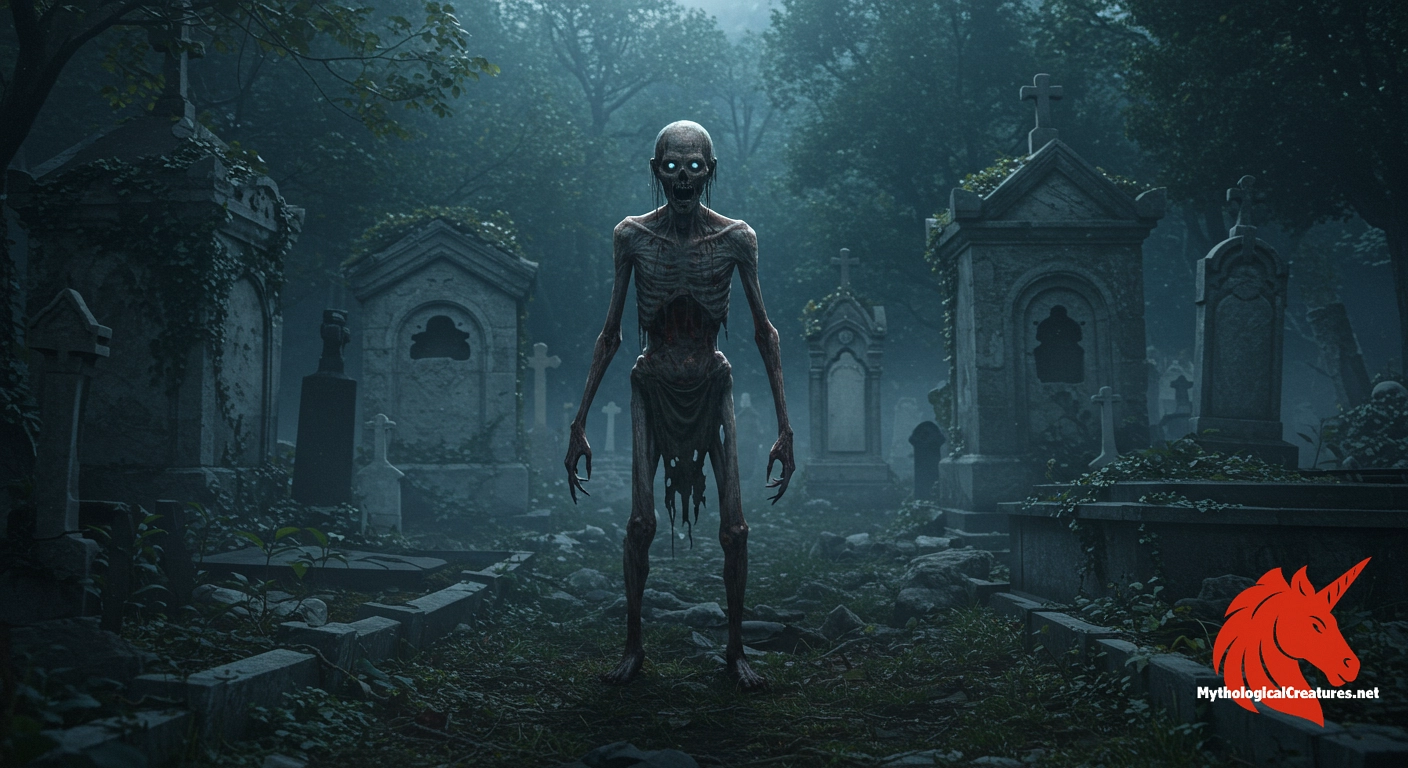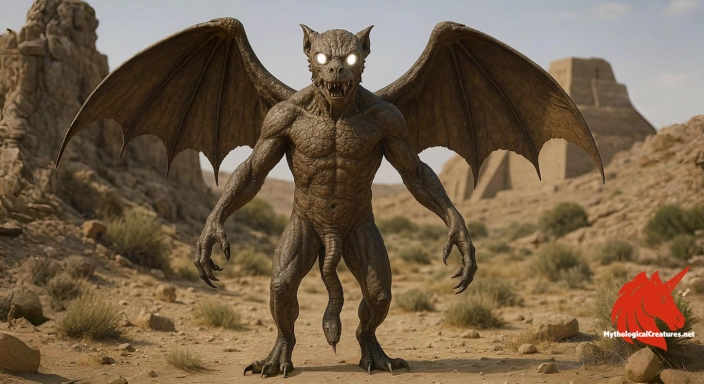Kukudh: Kukudh is an undead creature from Albanian mythology.

Kukudh
Kukudh - Kukudh serves as a cautionary figure representing the dangers of disturbing the dead.
Origins & First Encounters
In the mosaic of Albanian folklore, the Kukudh emerges as a mysterious and unsettling presence that blurs the boundary between life and death. Its origins are deeply intertwined with ancient local customs and rituals, forming a core part of the mythic heritage of the region. Stories of this undead entity have been passed through generations, capturing the imagination of communities from remote highlands to bustling village squares. Historical tales hint at early attestations in oral traditions, where the Kukudh was seen as both an omen and a messenger from realms beyond. The creature’s existence reflects a cultural dialogue between the sacred and the profane, as communities grappled with life’s transience. Over time, the legend has absorbed layers of meaning, transforming into a symbol of the inevitable decay and renewal that marks the human experience. The Kukudh’s narrative is woven into the fabric of Albanian storytelling, evoking themes of loss, retribution, and the eternal quest for redemption. Its chilling allure has kept the legend alive, serving as a constant reminder of the mysteries that lie just beyond mortal understanding. The enduring power of its myth continues to inspire both fear and fascination among those who encounter its legend.
Source Texts & Tale Variants
Hidden in the depths of time, the primary accounts of the Kukudh have been preserved through centuries of oral transmission and selective written records. Ethnographic studies from the 19th century provide some of the earliest snapshots of this unsettling figure, capturing a range of eerie encounters in secluded Albanian villages. Traditional ballads and folklore anthologies have since expanded upon these initial accounts, each iteration contributing unique details to the creature’s mythos. Various narratives describe it as a tormented spirit bound to the mortal realm by unfinished business or dire curses. In some retellings, the Kukudh is portrayed as a punitive force, while other versions imbue it with a sorrowful, almost mournful quality. Manuscripts and travellers’ diaries sporadically note the creature’s appearance near ancient burial sites and forgotten ruins. The multiplicity of descriptions has allowed the legend to evolve, each community adapting the myth to reflect local concerns and superstitions. Through these diverse sources—from formal ethnological studies to intimate local testimonies—the Kukudh remains a compelling figure within the rich corpus of Albanian undead lore. Its story has become a tapestry of variant traditions, each strand reaffirming the creature’s existential impact on its audience.
Form & Powers
The Kukudh is often envisioned as a spectral figure whose very presence exudes an aura of decay and otherworldly mystery. Its form is typically gaunt and emaciated, with elongated limbs and hollow, sunken features that evoke the pallour of a long-forgotten corpse. Eyes that flicker with an unearthly light are said to pierce the darkness, hinting at the sorrow and torment of its cursed existence. Faded remnants of ancient attire cling to its skeletal frame, suggesting that it might once have been human. Across different accounts, its skin is described as having a muted, almost luminescent quality, starkly contrasting with the impenetrable shadows of the night. Some traditions even mention ephemeral qualities in its appearance, where parts of the figure seem to dissipate like mist at the edges. The variability in its size and shape—from an imposing, towering presence to a more slender, elusive spectre—adds to the enigma surrounding the creature. Every detail, from the rags of its former finery to the subtle decay marking its features, contributes to an iconography that is as haunting as it is memorable. The Kukudh’s physical portrayal is a blend of stark human frailty and supernatural terror, encapsulating the very essence of undeath.
Regional Faces
Across the diverse landscapes of Albania, regional interpretations of the Kukudh reveal a tapestry of variations that enrich its legend. In the rugged northern highlands, some communities view the creature as a restless spirit that patrols narrow mountain passes and desolate outposts. Conversely, southern traditions often portray the Kukudh as a lone wanderer emerging from ancient cemeteries and forgotten homesteads. In coastal areas, the legend takes on maritime nuances, where the undead is sometimes linked to mysteries of the deep and sunken relics. Local rituals and rites of passage further influence the creature’s depiction, imbuing it with a moral dimension reflective of community values. Some villages incorporate the lore of the Kukudh into their celebrations and taboos, interpreting its appearance as a portent of communal misfortune or divine retribution. Regional narratives occasionally blend the Kukudh with other spectral figures, creating hybrid myths that highlight local historical experiences. These variations underscore not only the adaptability of the myth but also its powerful role in expressing the collective psyche of each community. In every corner of Albania, the shape and spirit of the Kukudh transform subtly to mirror the unique cultural and environmental factors at play.
Cultural Parallels
A comparative exploration of undead legends reveals that the Kukudh shares thematic affinities with several other European mythic entities. The creature’s spectral, reanimated nature strikingly parallels figures such as the Slavic upir and the Romanian strigoi, each haunting its own cultural landscape with similar motifs. Despite differences in local colour and narrative detail, these beings all embody the transgression of natural order through the defiance of death. In examining these myths, one discovers a universal human concern with the limits of mortality and the possibility of life beyond the grave. There is a noticeable resonance between the moral warnings implicit in the Kukudh’s legend and those found in neighbouring folklore, where reanimation is often seen as punishment for earthly sins. The creature’s portrayal, much like its counterparts, is steeped in a rich symbolism that challenges the boundaries between horror and lament. Ritual practices across these cultures also exhibit similarities, with protective charms and exorcisms serving as common responses to the presence of the undead. Such cross-cultural connections illuminate a broader narrative about fear, retribution, and the eternal quest to reconcile life with death. Ultimately, the Kukudh stands as both a unique Albanian phenomenon and a part of a wider European tradition dealing with the mysteries of existence beyond mortal life.
Legacy & Modern Evolution
The evolution of the Kukudh myth offers a striking example of how ancient legends can adapt and persist in a modern age. In earlier centuries, its spectral presence served as a powerful symbol of the community’s struggle with the mysteries of death and the unknown. With the passage of time, the narrative has gradually absorbed elements of psychological terror and existential introspection, reflecting modern sensibilities. Contemporary interpretations have recast the Kukudh not only as a harbinger of doom but also as a poignant emblem of the loss of cultural memory and the inevitability of decay. Modern Albanian literature and cinema have embraced its legend, using the undead figure as a metaphor for the collision of past and present. Artists and writers have reimagined the creature as a complex symbol of both regret and rebellion against the relentless march of time. The reawakened interest in local folklore has ensured that the Kukudh remains a vibrant part of cultural discourse, inspiring renewed scholarly and popular attention. Today, its enduring legacy serves as a bridge between ancient superstition and contemporary existential inquiry. The ongoing re-telling of its tale reflects an evolving dialogue that respects its storied past while inviting reinterpretation for new generations. In this process, the Kukudh has transformed into an icon that encapsulates both the horror and the beauty of human transience.
Interesting Fact
Kukudh is one of the few explicitly undead entities in Balkan folklore, offering a unique insight into Albanian cultural interpretations of the afterlife.
Quick Creature Info
Associations:
Our Mythic Legendary Rating:

Also Sometimes Known As:
Habitat:
Supernatural Powers:
Physical Attributes:
Behavior:
Lore:
Related Creatures, Tales or Lore
References
Discover Another Mythical Legend You May Not Have Heard Of?
Uncover the mysteries of ancient folklore and expand your knowledge of legendary beings from cultures around the world.
Dare to Meet the Pazuzu....
Mythical Disclaimer: The images and data on this site are derived from various historical and literary sources, but we have found that many myths often have multiple versions and interpretations across references, sometimes contradictory. As a result, these creature depictions are artistic interpretations—imaginative blends of folklore, legend, and a dash of AI guesswork. Because creature descriptions vary widely, our illustrations and accompanying information represent our best effort to honor mythology while bridging creative gaps. Enjoy these interpretations—just remember, we've done our best to respect the stories and validate available data, but in the realm of mythology, details often shift, imagination leads the way, and nothing is ever set in stone!
Curated by the Mythological Creatures Team (rev. May 2025)
